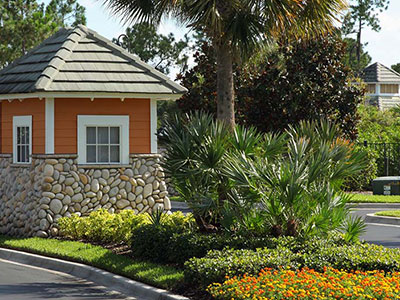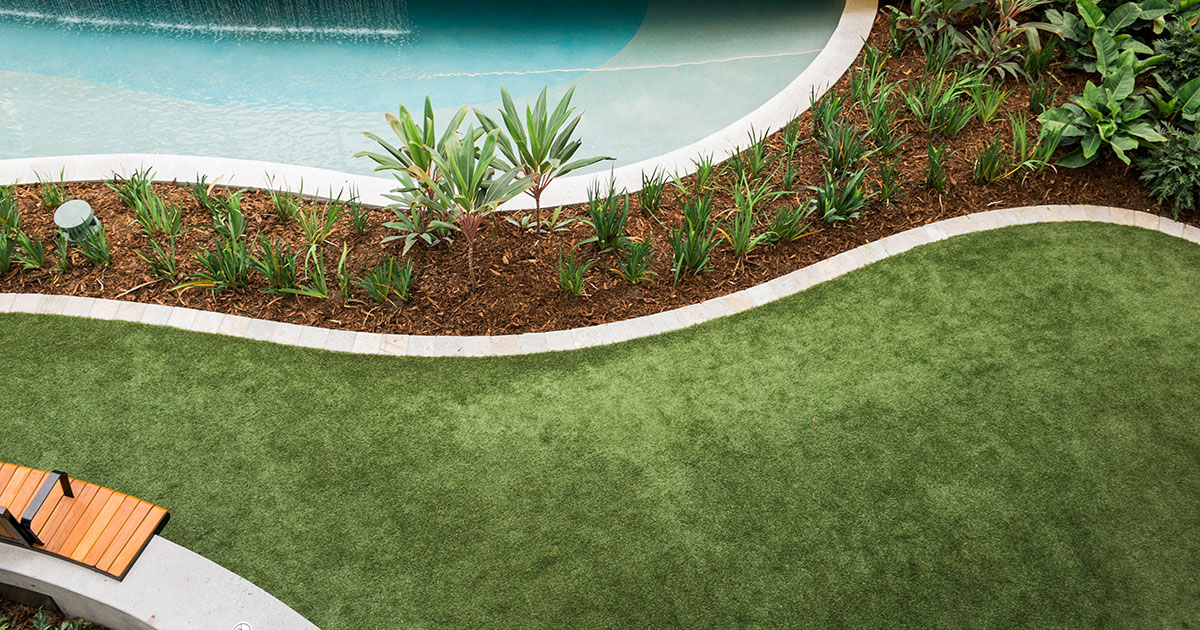Are you wondering how to enhance the overall look of your outdoor space now that it’s officially Summer? With the wonderful year round climate, landscape designs in Florida aren’t always simple techniques. There are so many elements that can be used to perfect the look. From simple aesthetics to preparing for storm season, all of the following are design elements that can help your property look its best and feel upscale.
Landscaping Design in Florida’s Changing Climate

Climate resistant landscaping means utilizing certain plants that are hardy and can live through severe weather. This can include wind resistant ones that are flexible and large enough to act as a windbreak for certain structures, such as the long leaf pine tree. This may also include plants that thrive in wet, water-logged areas, like tropical foliage or even chokeberry shrubs.
Plants and flowers that are resistant to heat include geranium, marigold, and cactus. A tree that thrives in hot temperatures and is identifiable in tropical climates is the Palm trees, like Queen Palm or Pindo Palm. The Palm tree has elements that move freely with the wind and withstand temperatures unlike any other in the Florida heat. Adding plants and trees that are flexible to drastic changes in climate is a way to ensure that your outdoor space is not only attractive but functional in more extreme climates.
Asymmetrical Gardens Are a Modern Trend
Asymmetrical gardens are posed to be one of the top Florida landscape design trends of 2019. This trend tends to work for commercial spaces that are casual and looking for a less structured feel to their outdoor space. Asymmetry allows you to mix the height and shape of shrubs and bushes to give the area a more natural look.
Adding pieces to an asymmetrical landscape to turn it asymmetrical is also a possibility. A great way to accomplish this is by adding an arrangement to an entryway to make it the focal. Trees can be added with tall shrubs to one side of the entry and an arrangement of smaller bushes along with shrubs to the other side. This will give your landscaping project a dramatic look that will be sure to draw attention.
Retail spaces are utilizing this trend near paved areas like traffic entry points. Concrete can be laid in any way you like, making the landscaping in these areas an opportunity to showcase fun design taste.
Color Programs for Each Season
An expert in horticulture can help you design a seasonal color program with a variety of different plants that are specific to your region and property.
Smaller plants like hardy perennials and colorful annuals will liven your landscape and add vivid splashes of color. Spring bulbs like tulips and hyacinths are a great way to add a burst of color. Summer annuals like petunias or zinnias are brightly colored and vibrant. Chrysanthemums are a fall favorite and a great flower for harvest decor.
It isn’t just the flowers that need designing and tending to, though. Seasonal gardens can use different types of mulch, in many colors, rock beds, and even structural elements. And it’s important that each of these is properly cared for. Soil aeration, mulching touch-ups, and ongoing weeding guarantee a beautiful garden all year long.
Bringing Indoor Living Spaces Outside
For apartment complexes specifically, many property managers are requesting to bring the indoors outside. New construction projects include creating beautiful outdoor spaces that allow residents to spend more time being comfortable and enjoying more of the available outdoor space.
Covered patios and screened-in porches keep apartment dwellers comfortable while in the heat, humidity, and bugs. These could include additions like ceiling fans, light fixtures, fire pits, and skylights. Outdoor kitchens are also quickly becoming a popular part of design and building projects. With hardscape elements like stamped concrete, pavers, and decking, these spaces can be as close to luxury as you’d like.
While it might not be an obvious landscape design trend, including water-resistant furniture around a pool or clubhouse makes the space feel like a part of the home. It’s a small edition but it could be exactly what is needed to complete a space.
Using Rain Gardens to Curb Landscape Drainage Issues
Rain gardens offer an attractive, effective, and low maintenance solution to drainage issues, and could be the perfect addition to your landscape. They can be designed as a simple landscaping structure to help catch runoff or a more complex ecosystem.
They are essentially garden beds that are filled with rocks and deep-rooted plants which drain water into the soil and away from your property to avoid stormwater damage, flooding, or mold issues. The gardens collect the rainwater from your downspout, as well as from across your property.
In order to work properly, rain gardens should have three zones. The first zone is reserved for plants that can endure extremely wet conditions. The second is for plants that can tolerate some standing water, and the third zone is for plants that can tolerate dampness, but not heavy standing water. They can help prevent topsoil erosion, in addition to flooding, and make an affordable option since the plants do not require any additional watering or fertilizer.
Want to Upgrade Your Florida Landscape Designs?
For a few examples of what ASI has accomplished with client landscape designs in Florida, head over to our portfolio. Large commercial projects require an eye for design and regular maintenance upon completion. We are committed to providing top quality service for your outdoor space. Contact us today to learn more about our process.


